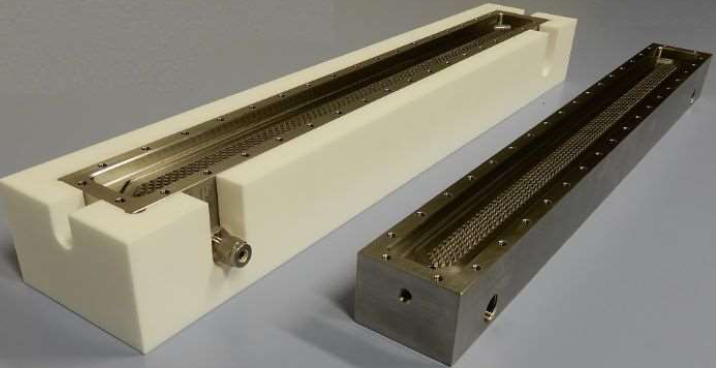Research Project 13
State of the art
- Scaling-up photochemical transformations remains difficult due to Lambert-Beer’s law. The advent of continuous flow photoreactors for small molecules has facilitated preparation of larger amounts of product. However, scaling a multiphasic photochemical process (e.g. using a heterogeneous photocatalyst) from the lab to kg-scale is unprecedented.
- Many measures of process efficiency and environmental impact exist, though none take into account irradiation sources and associated cooling required for photochemical transformations.
- There is a lack of applying photochemical reactions in common retrosynthetic analysis of small molecules.
 Scheme 13. HANU reactor enables scaling photochemistry to production scale.
Scheme 13. HANU reactor enables scaling photochemistry to production scale.
Progress beyond the state of the art
- Using the in-house developed HANUTM reactor (Scheme 13), a homogeneous photochemical transformation was successfully scaled tenfold, showcasing the straightforward scale-up principles.
- Energy consumption associated with irradiation source and process thermostat was logged to estimate economic and environmental impact per unit mass of desired product, and optimize these metrics.
- Relevant photochemical disconnections are being compiled.
Key Objectives & Expected Results
Performance Indicators
- A multiphasic photochemical process will be scaled using the HANUTM reactor (several kg/day scale).
- Robustness will be assessed in long-term (1-24h) performance runs.
- A comprehensive metric system for photochemical transformations will be developed. Important in this metric will be the lifetime of the light sources, the energy consumption, the photon flux through the reactor and the requirements of the reaction itself
- An exhaustive overview of photo-retrosynthetic data will be collected,
classified and compared to non-photochemical disconnections.
- Synthetic routes towards APIs will be screened for photochemical optimization, and one will be selected to demonstrate efficiency increase.





